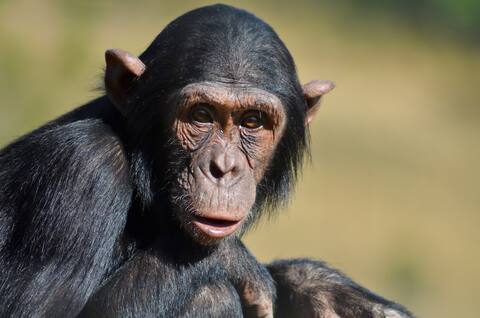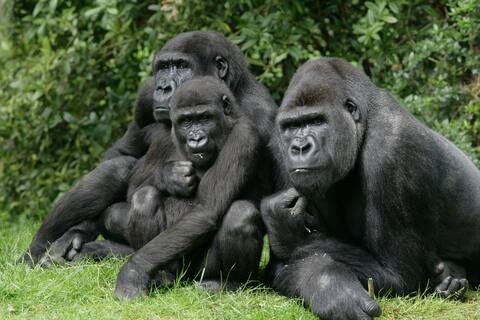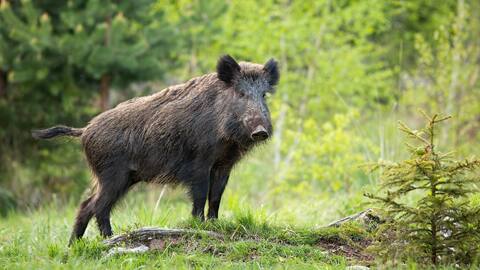Chimpanzee, gorilla, wild boar, even horse or dog: these animals currently possess viruses that could be responsible for the next disease of animal origin to infect humanity on a large scale.
• Read also: Avian flu: bird carcasses multiply on the beaches
• Read also: A warmer planet, sicker animals
• Read also: Experts monitor the spread of disease and the resistance of bacteria
“We cannot say where the next pandemic will come from, but around ten species have a very large number of common viruses with Homo sapiens, a prerequisite for interspecies transmission”, explains Timothée Poisot, professor of biological sciences. at the University of Montreal and main author of an article which has just appeared on this subject in the journal arXiv.
With his colleagues from the United Kingdom and the United States, the researcher used artificial intelligence to identify the animal species most likely to transmit viruses to humans that carry serious diseases, known as zoonoses.
We know that the coronavirus that caused COVID-19 is of animal origin, even if the species is not yet formally identified, just like the virus responsible for AIDS. The bat is said to be the cause of rabies and the rat of monkeypox. To find out which zoonoses would be of most concern, the researchers used a very complex database of 80,000 possible virus-host interactions.
Many factors
The researcher specifies that the species he has identified are not necessarily those which will undoubtedly transmit the next virus capable of triggering a human pandemic, because many factors play into this phenomenon. A capital element is the promiscuity that we maintain with certain species.
“Although we have many genetic links with chimpanzees and gorillas, few humans come into contact with these animals on a daily basis. On the other hand, the dog is an animal that has shared the intimacy of humans since the dawn of time,” points out Mr. Poisot.
Does this mean that the next pandemic could come from “man’s best friend”? There is no consensus on this point, replies the biologist, but the dog is the source of several “new” viruses that have infected humans in Malaysia, Cuba and Haiti.
35,000 computing hours
Highly theoretical, the work of the biologists required 35,000 hours of computer use by Calcul Québec, a non-profit organization that requires the use of supercomputers, machines 3,000 times more powerful than those used at the home.
At the end of this work, about twenty cases were selected. The researchers were surprised to find that one of them, responsible for smallpox in mice, had actually been identified as responsible for an outbreak in a Chinese school in 1987.
Their discovery made it possible to reposition the species most at risk according to current scientific knowledge. While species from Europe were suspected, the research of the international team shifts the gaze towards the Amazon. It is here, according to Professor Poisot, that the potential for viral evolution is greatest.
GAUL HORSE
(Equus caballus)
In the stable, the horse can transmit ringworm, mange and salmonellosis. The wild species is still present mainly in the western United States and western Canada.
DOG
(Canis lupus familiaris)
Descended from the gray wolf, the dog is the first species domesticated by humans and lives all over the world. In addition to rabies, which is often fatal, the dog can transmit bacterial diseases such as leptospirosis causing fever and kidney dysfunction.
CHIMPANZEE
(Pan troglodytes)
Suspected of being at the origin of AIDS, a retrovirus which would have affected it long before humans, the chimpanzee would be responsible for the transmission of Ebola, often fatal for humans.
WESTERN GORILLA
(Gorilla gorilla)
The western gorilla is present in the plains of seven African countries. Ebola would have decimated a good part of the species today on the verge of extinction. It could have played a role in the transmission of the AIDS virus to humans.
MOUNTAIN GORILLA
(Gorilla Beringei)
This equally endangered primate lives in the Great Lakes region of Africa. It carries diseases like influenza, meningitis and tuberculosis.
CAYENNE RAT
(Proechimys guyannesis)
In Guyana, leptospirosis, also transmitted by dogs, is nicknamed “rat disease”. This Latin American species is distinct from the brown rat (Rattus norvegicus), found in cities like Montreal.
EUROPEAN BOAR
(sus scrofa)
A mammal originating in Europe and domesticated in North American farms, the wild boar carries around thirty diseases that can be transmitted to humans, including brucellosis and tuberculosis.
WOODLAND MOUSE
(Peromyscus maniculatus)
Present in Quebec, the deer mouse carries hantavirus in its urine, saliva and feces. Human symptoms: fever, chills, headache and muscle aches. Untreated, the disease causes breathing difficulties.
BIGHEAD LAND MOUSE
(Hylaeamys megacephalus)
Restricted to the South American continent, this rodent is responsible for cases of leishmaniasis, a parasitic infection of the skin.
ZYGODONTOMYS BREVICAUDA
(No name in French)
This species of rodent present in South America has been identified as a reservoir of the Venezuelan hemorrhagic fever virus.






